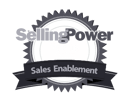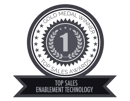
Better sales forecasting - a very short primer
Ask any B2B manager about the joys of sales forecasting. Most likely, they won’t respond “I thought you’d never ask!” and excitedly explain how much they look forward to it every quarter.
Why would they? 50% of the time, forecasts fail. It’s inherently difficult to predict performance when dealing with multiple decision makers, politics and the allure of status quo. Unexpected events can turn a sure thing into a no decision very quickly.

So, we have to accept that we’ll never be perfect. That said, there are things we can do to restore faith in our forecasts. As with everything else, there is no quick fix. If you want consistent results, everyone in the sales organization needs to do the right things consistently.
What to exclude?
Establish ground rules for the type of deals you are willing to include in your forecast. Regardless of the estimated close date. Forecasting is hard enough without the noise created by opportunities that are too old, that have no pulse or no momentum.
Here are four questions to help you get started:
How old can a deal be – in other words, how long can an opportunity sit in our pipeline – before it’s disqualified from our forecast?
How long can an opportunity go without any progress (not just activity!) before disqualified?
How long can an opportunity stall?
How long can an opportunity remain in the same sales process phase (i.e velocity) before we disqualify it from our forecast?
Use historical data to make an informed decision when answering the above questions. Perhaps your win rates are abysmal when the sales cycle passes the 9 month mark, when a deal stalls for over 1 month and when it gets stuck in the negotiation phase for more than 3,5 weeks. I obviously made these numbers up, however I highly recommend doing this exercise to find your answers to these important questions.
Support and engagement
Deals projected to close shouldn’t come as a complete surprise. They’ve all been on a journey from qualified prospect to milestones achieved. Key contacts and competitors would have been identified along the way, as reps worked through the process. Coaching sessions would have uncovered where help was required, playbooks and resources made readily available to help them progress.
By consistently keeping your finger on the pulse of each deal, with continuous probing (the constructive and creative kind…), coaching and support, you will be in a much better position to determine the validity of each forecasted opportunity. Particularly if you have proactively excluded the kinds of deals based on the four questions listed above.
Accountability
 A good forecast is supported by good arguments. Subsequently, sales people need to be held accountable for their projections. They need to justify why they are including a deal where the closing date has been pushed back multiple times without any progress or activity. They need to keep the sales software accurate and up to date, making everything from meeting summaries to written customer commitments readily available. If important questions are left unanswered and important facts are left unconfirmed, they need to dig deeper.
A good forecast is supported by good arguments. Subsequently, sales people need to be held accountable for their projections. They need to justify why they are including a deal where the closing date has been pushed back multiple times without any progress or activity. They need to keep the sales software accurate and up to date, making everything from meeting summaries to written customer commitments readily available. If important questions are left unanswered and important facts are left unconfirmed, they need to dig deeper.
What should one measure in order to produce better forecasts? Learn more about KPI's, goals and leading indicators from our Realistic Goal Setting Kit.

By Fredrik Jonsson
You know people that get excited about things like pomodoros and timeboxing strategies? Fredrik is one of them. He's also a former freelance writer and subsequently a man of many words. Words used to help companies take action on better ways to increase sales effectivenes. Fredrik is our Chief Content Officer at Membrain, the world's first sales software helping companies move from merely having a sales strategy towards executing it on a daily basis.
Find out more about Fredrik Jonsson on LinkedIn







